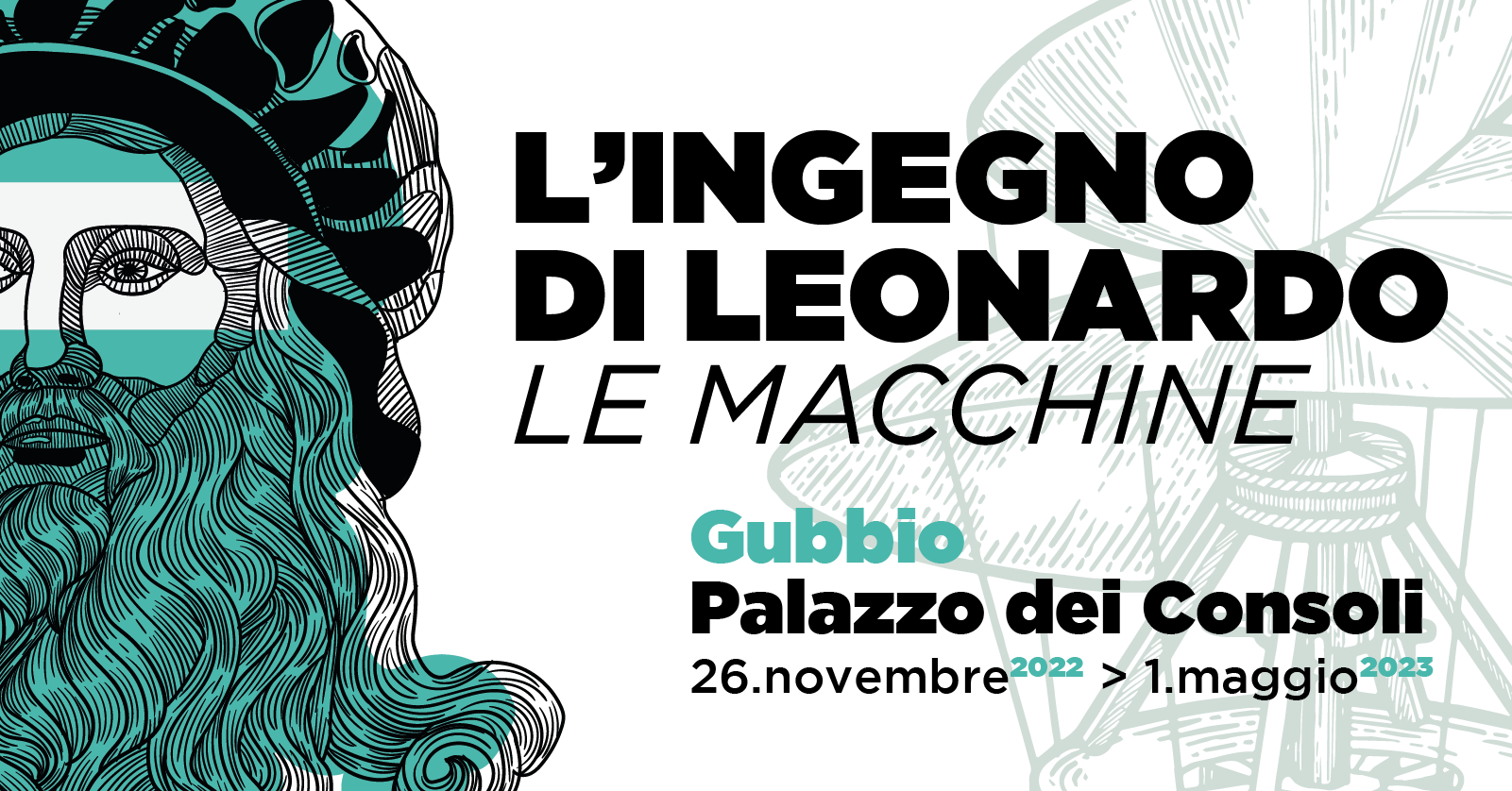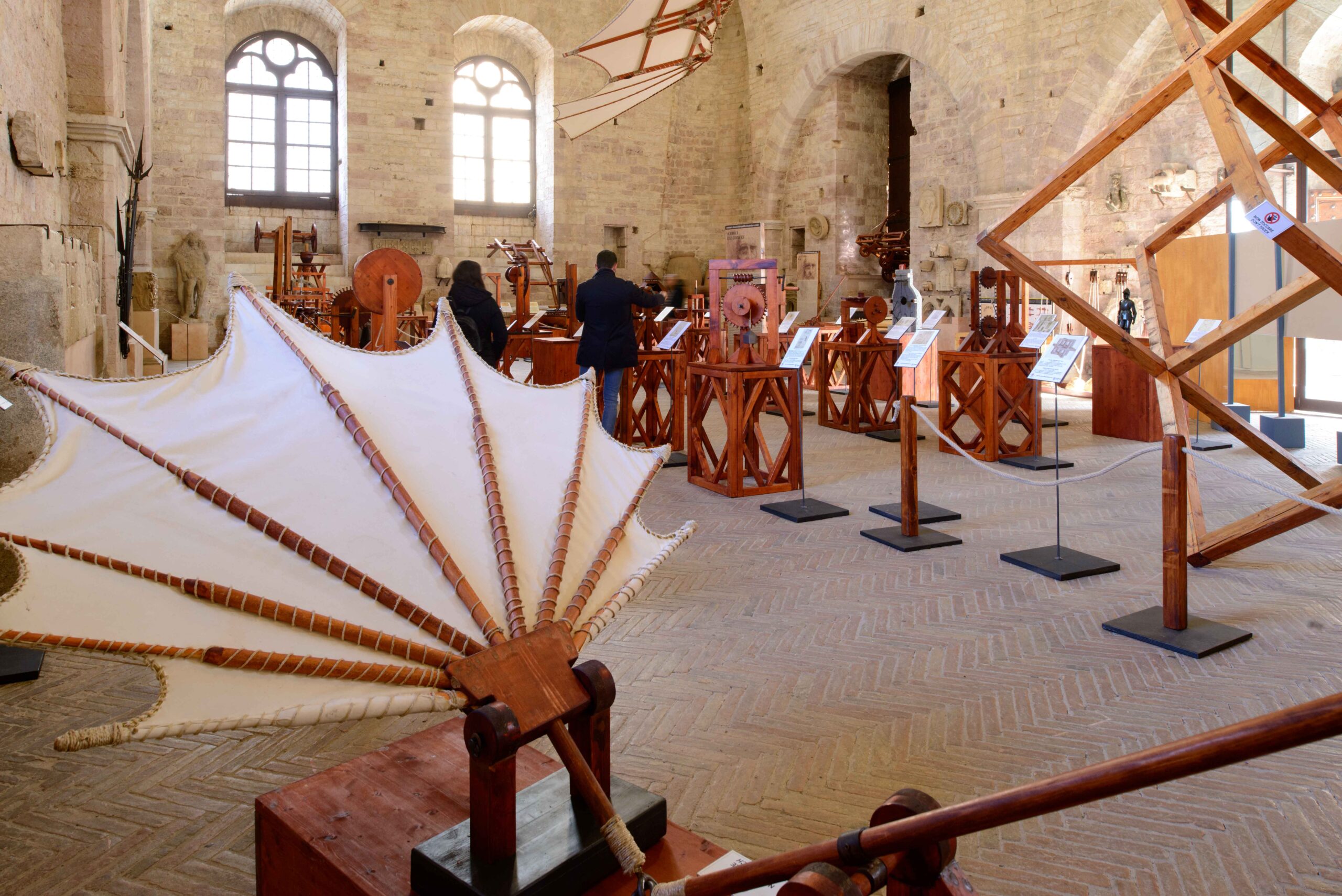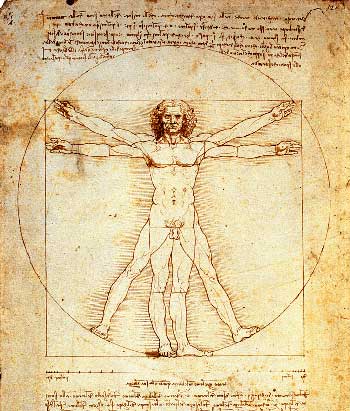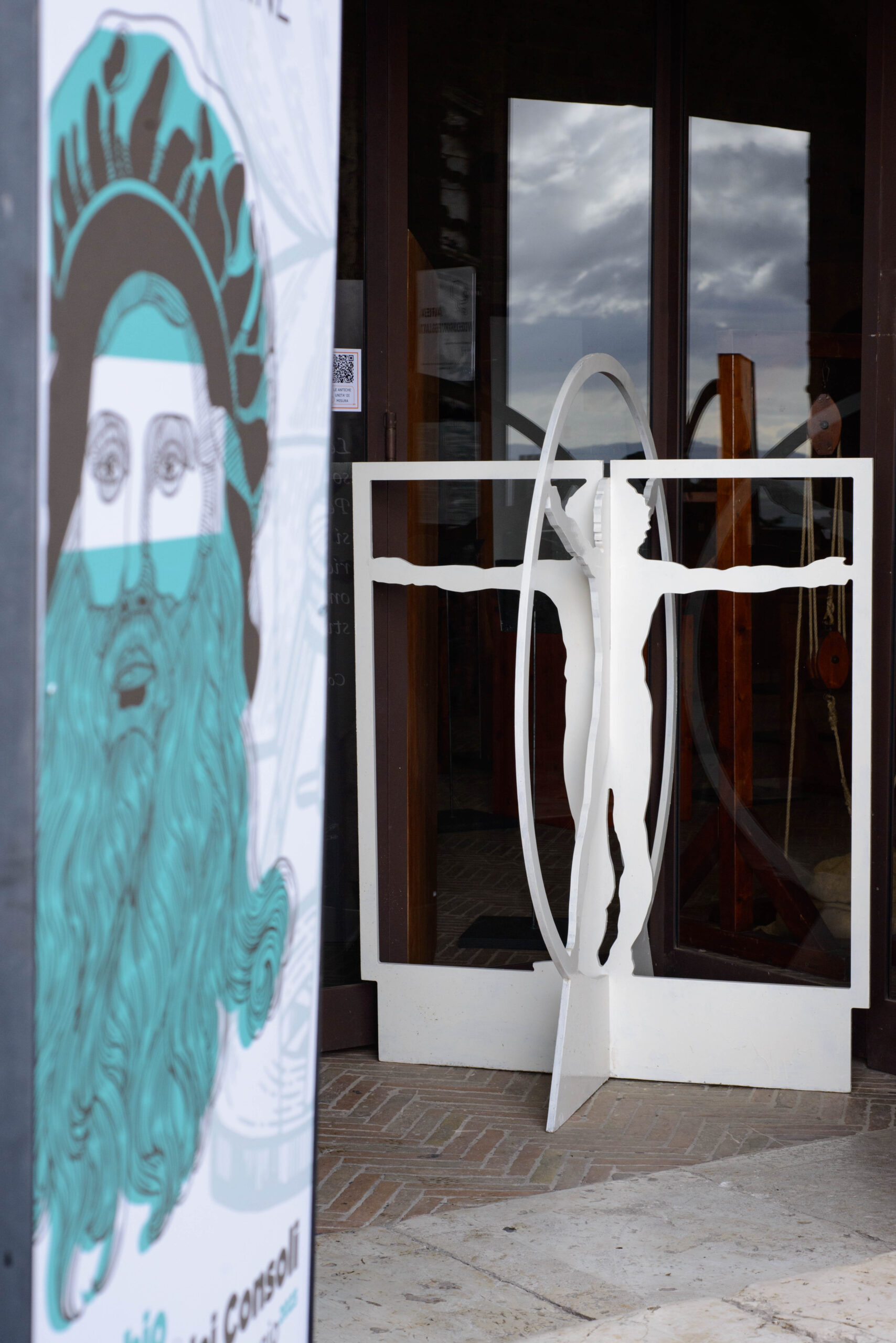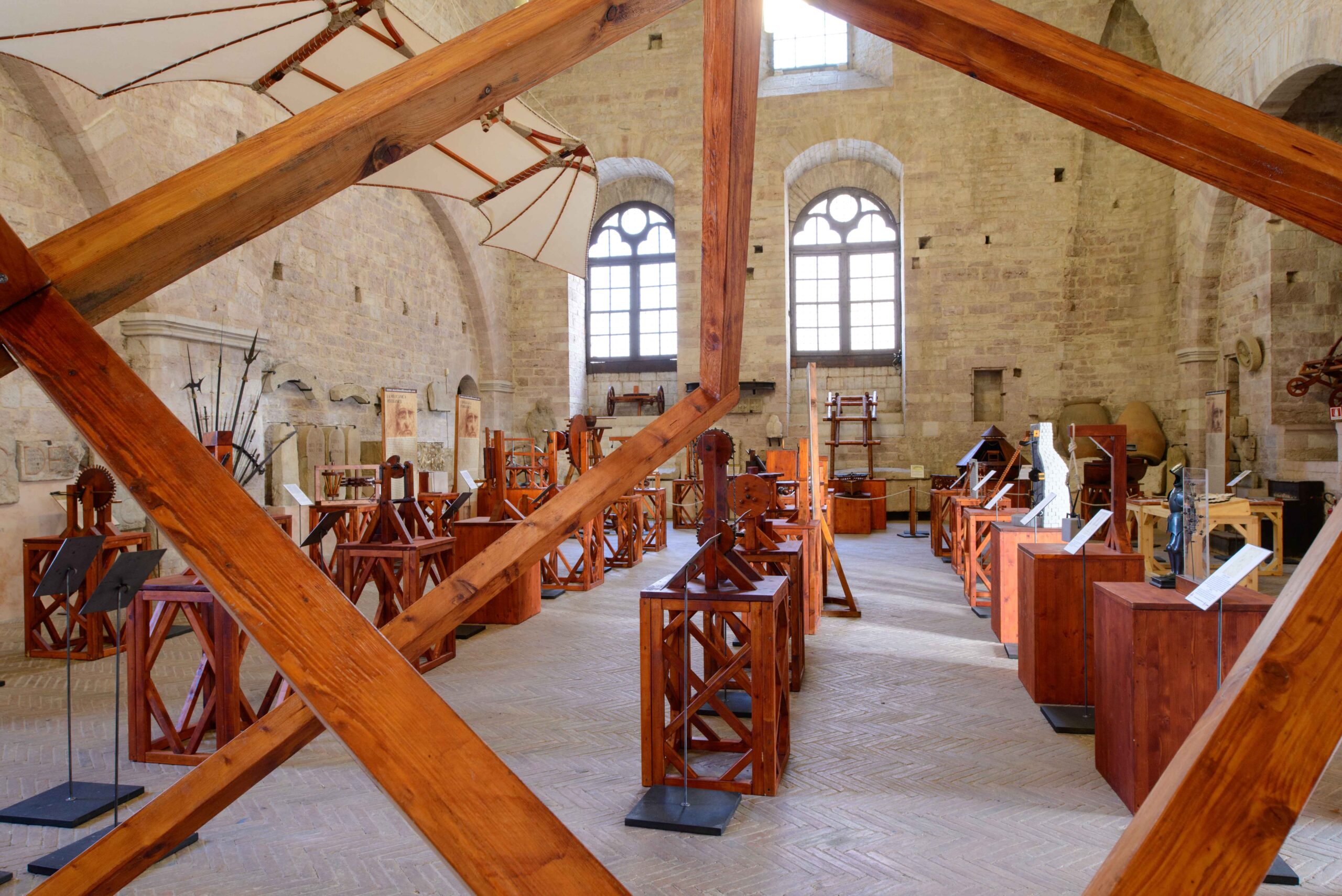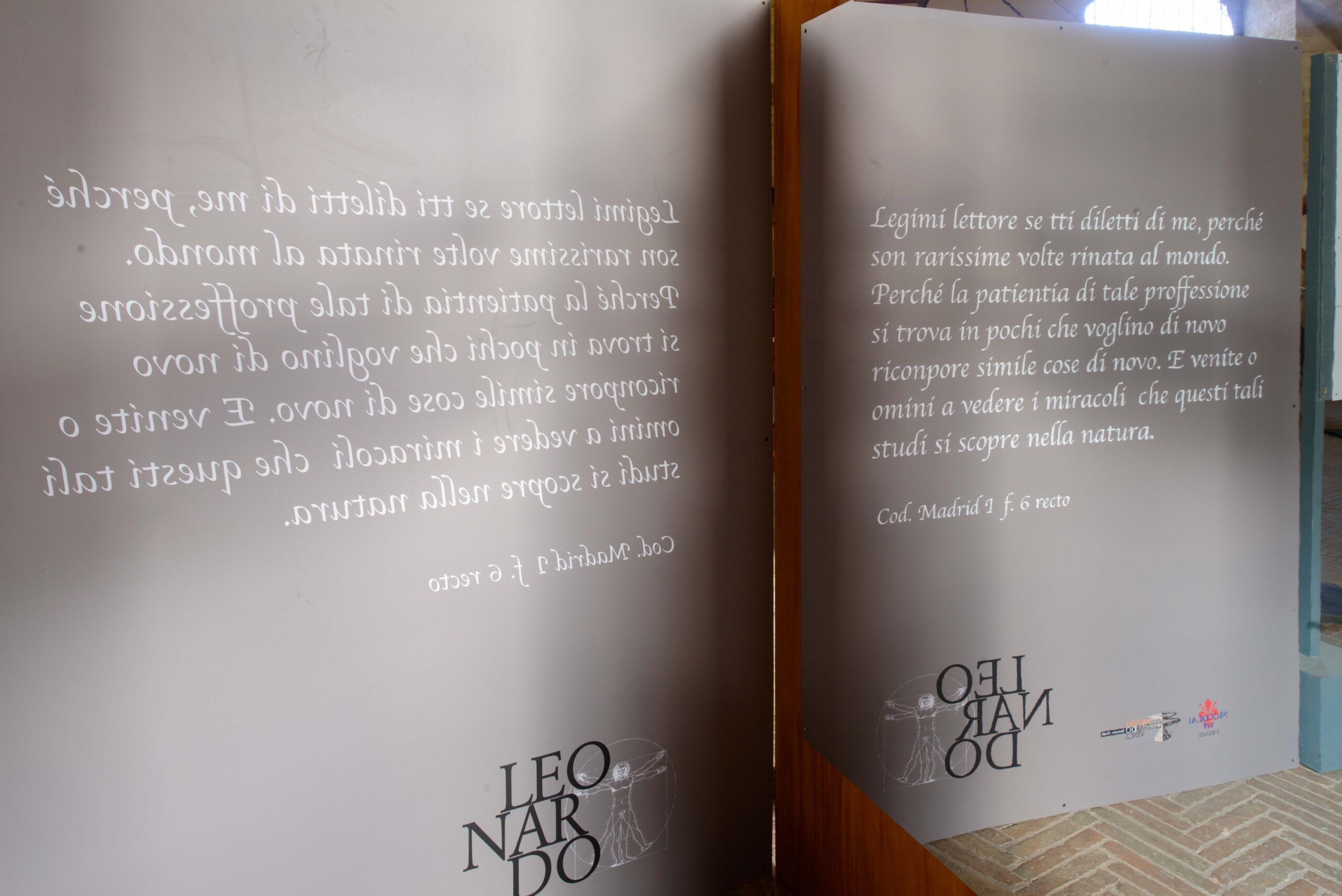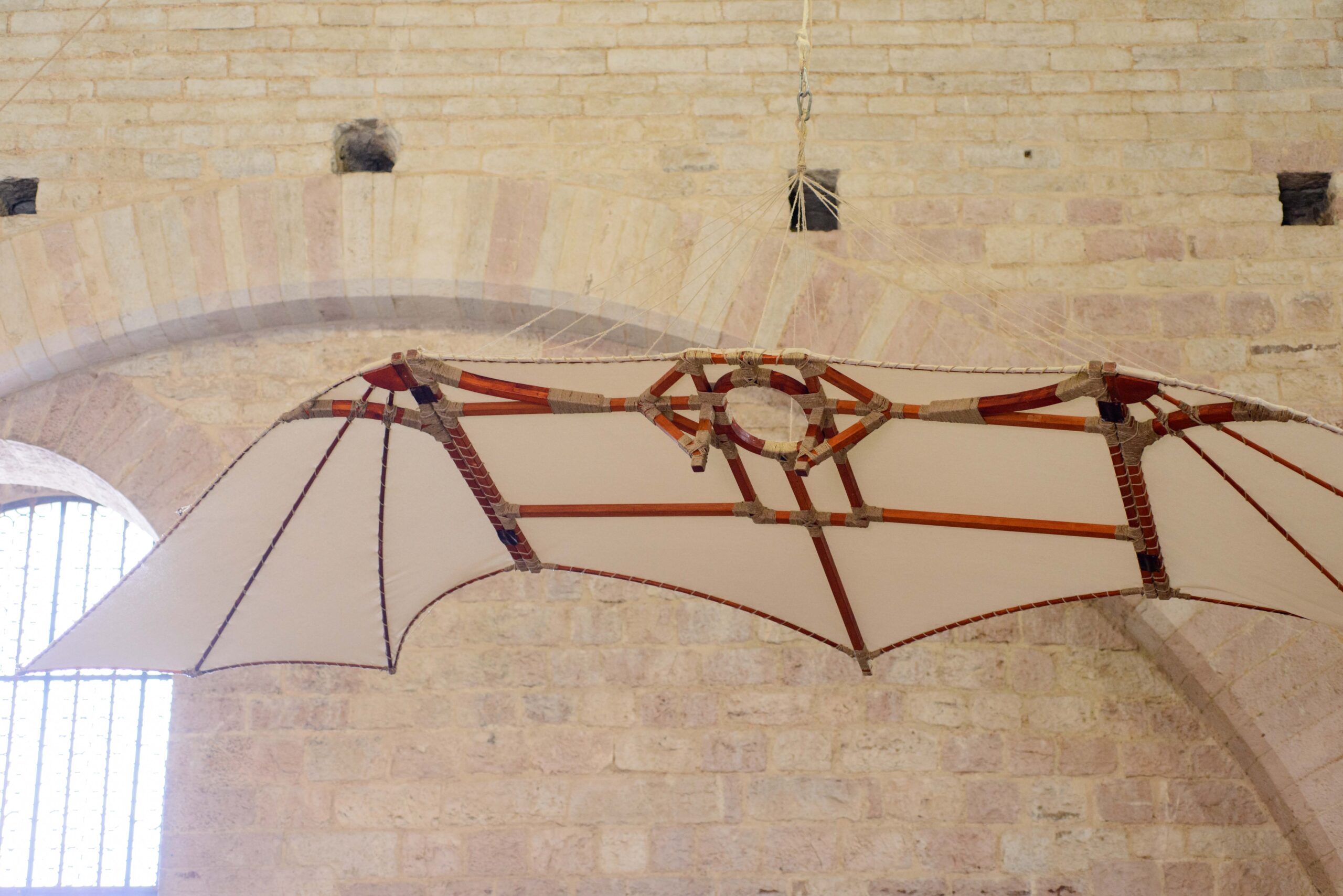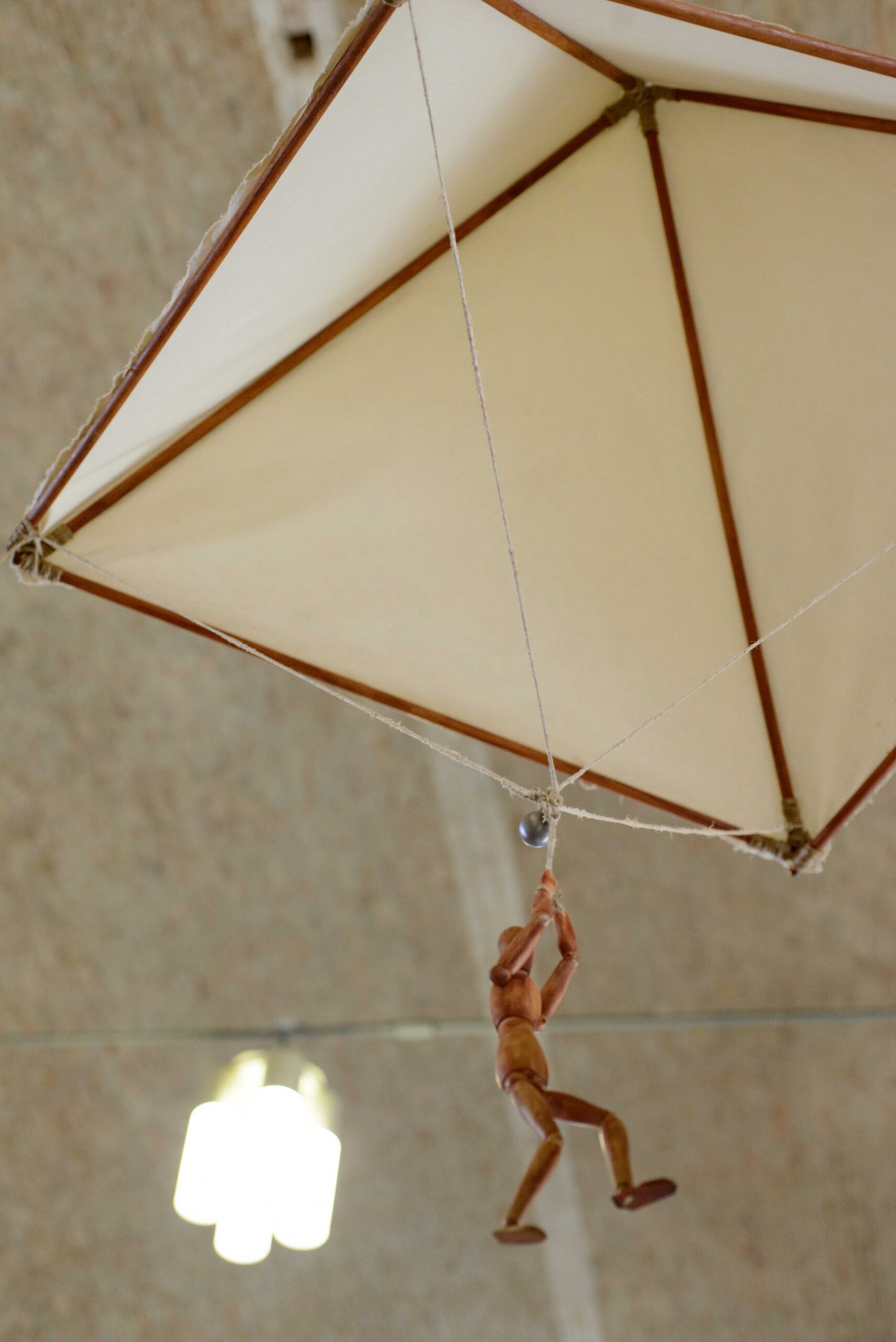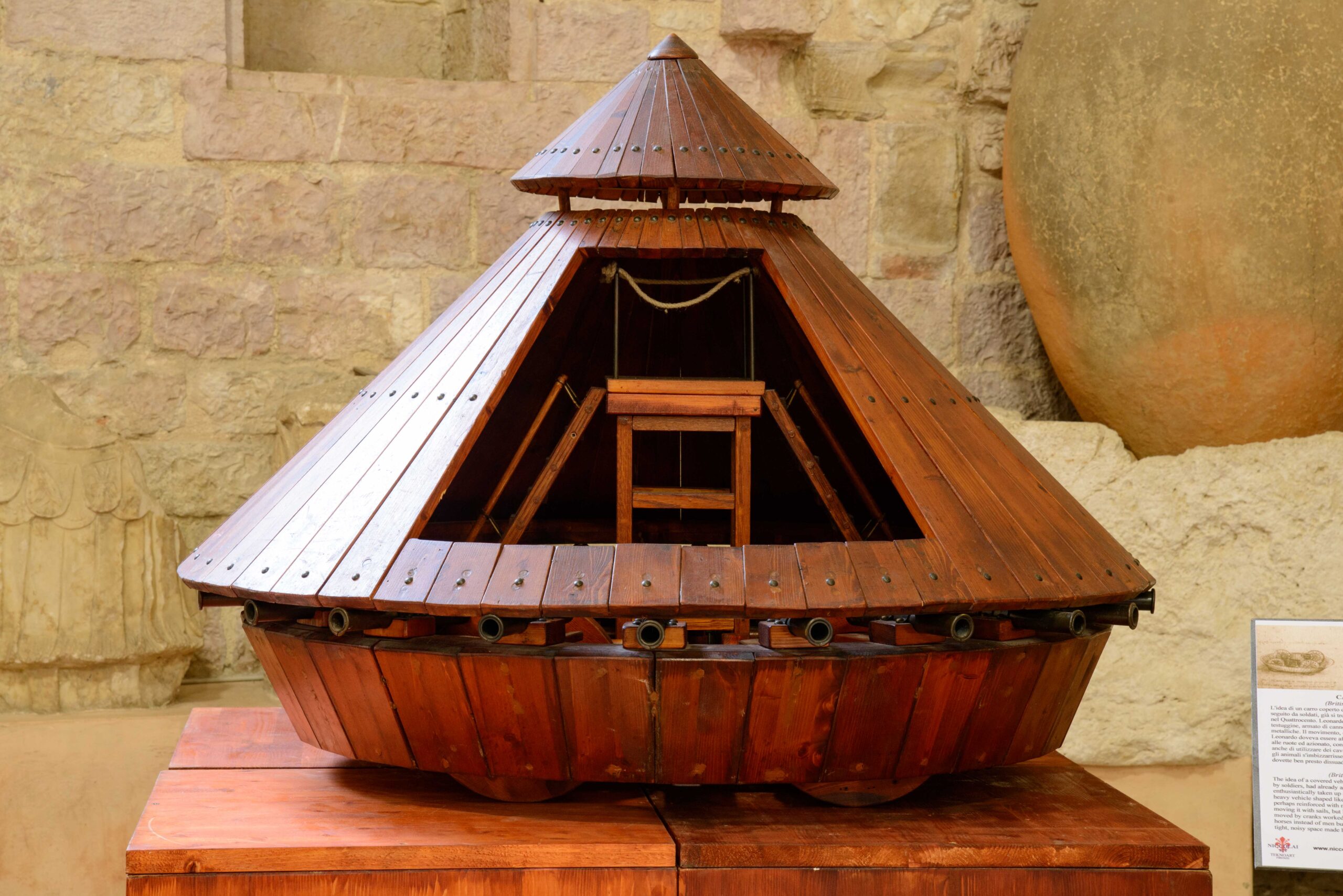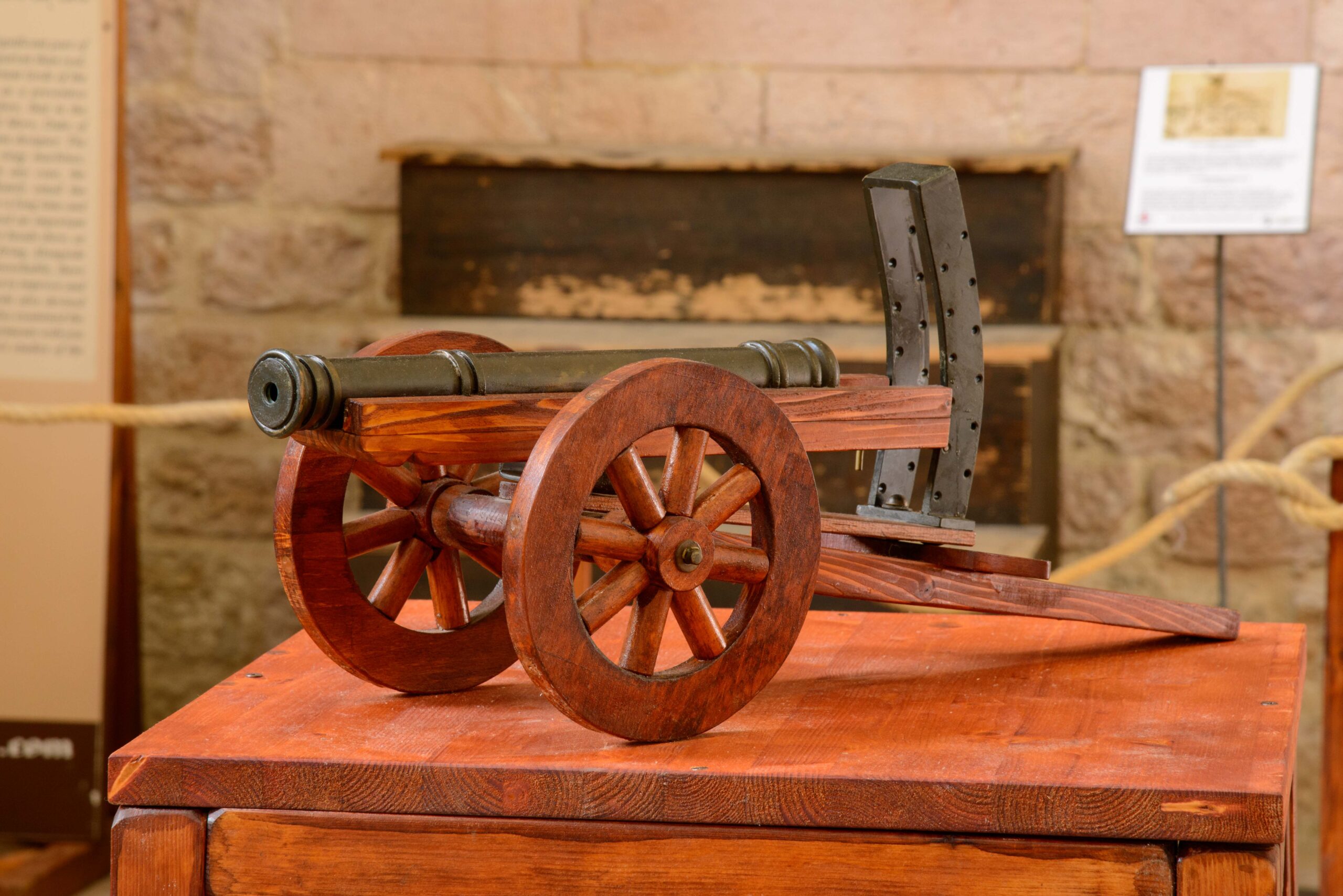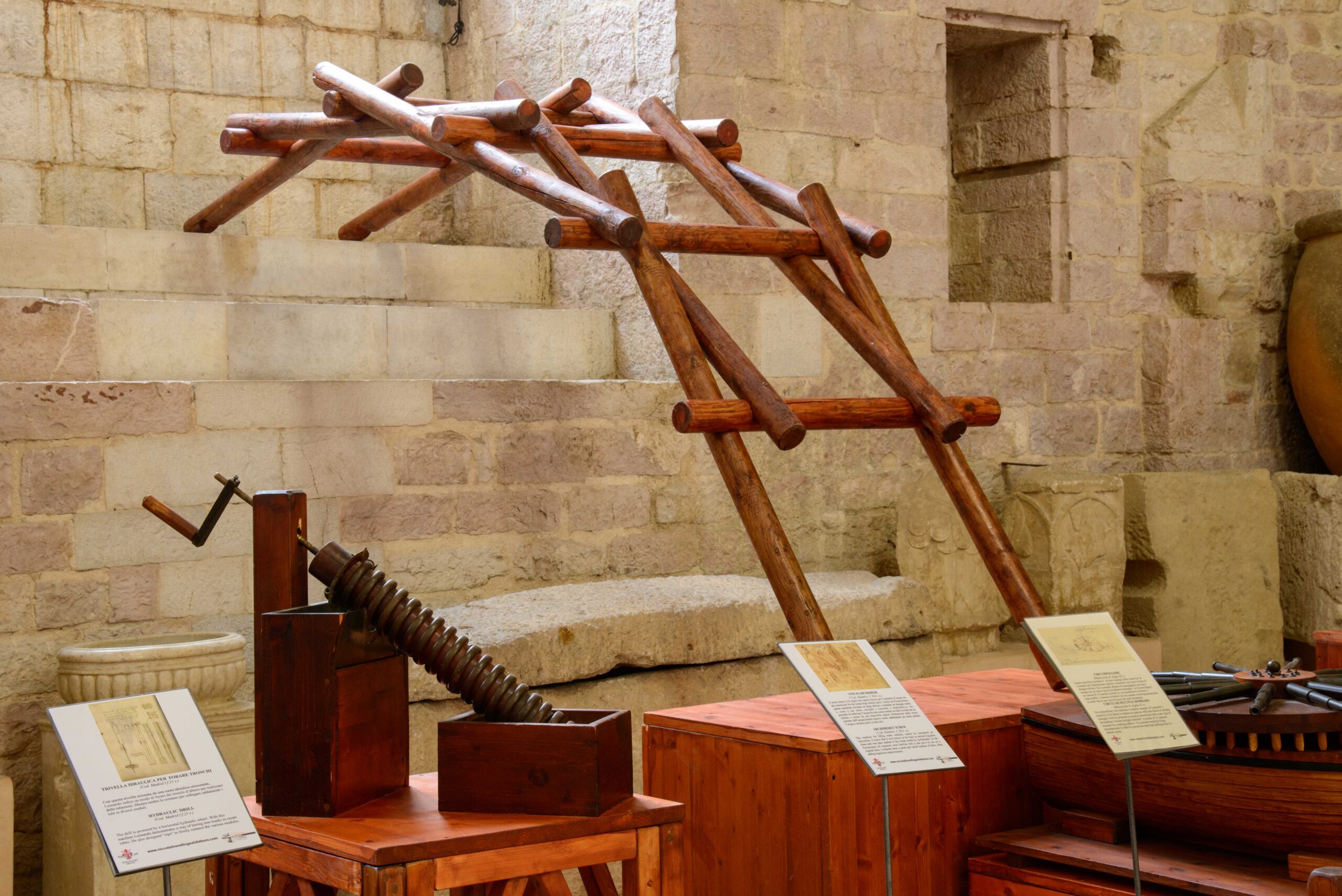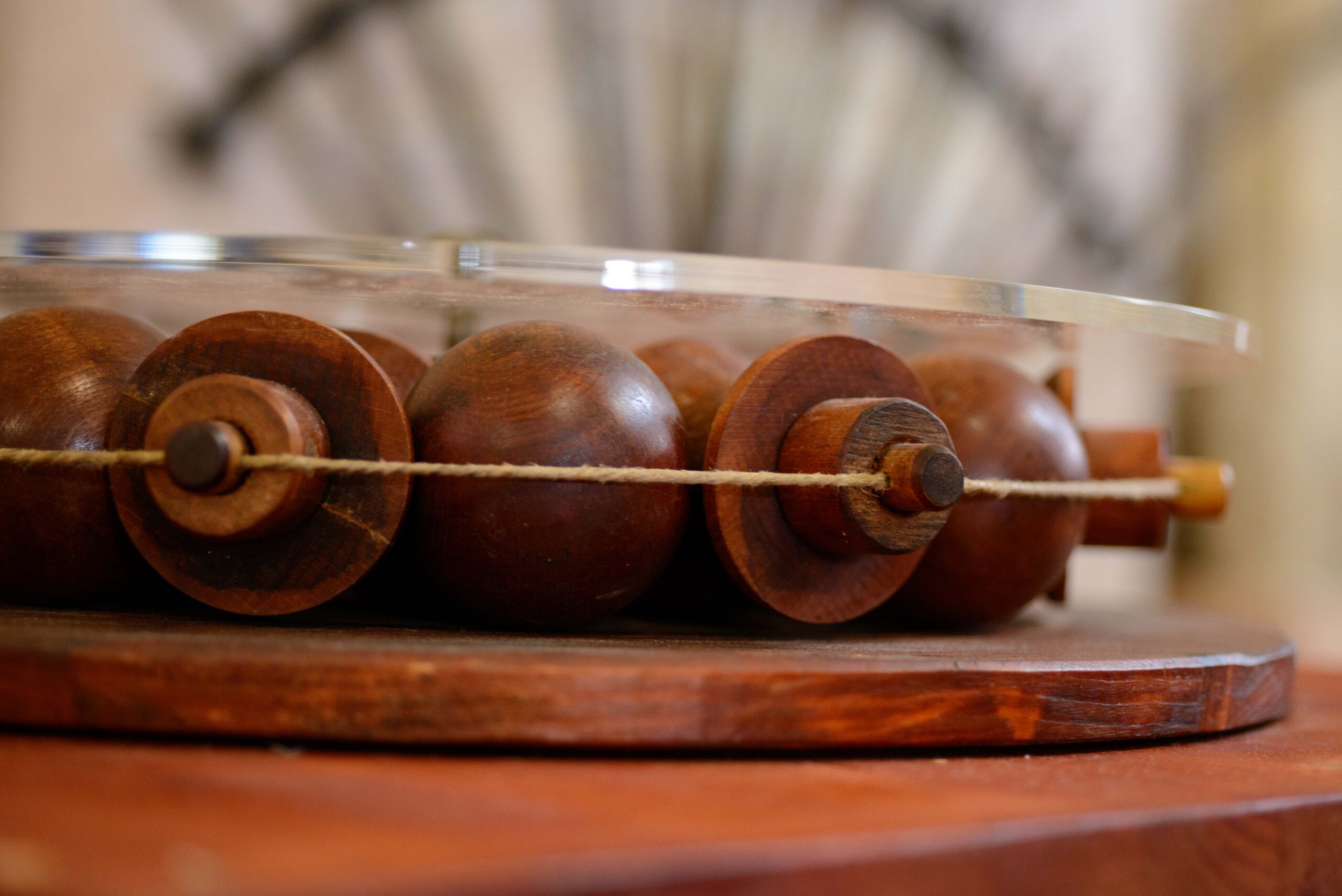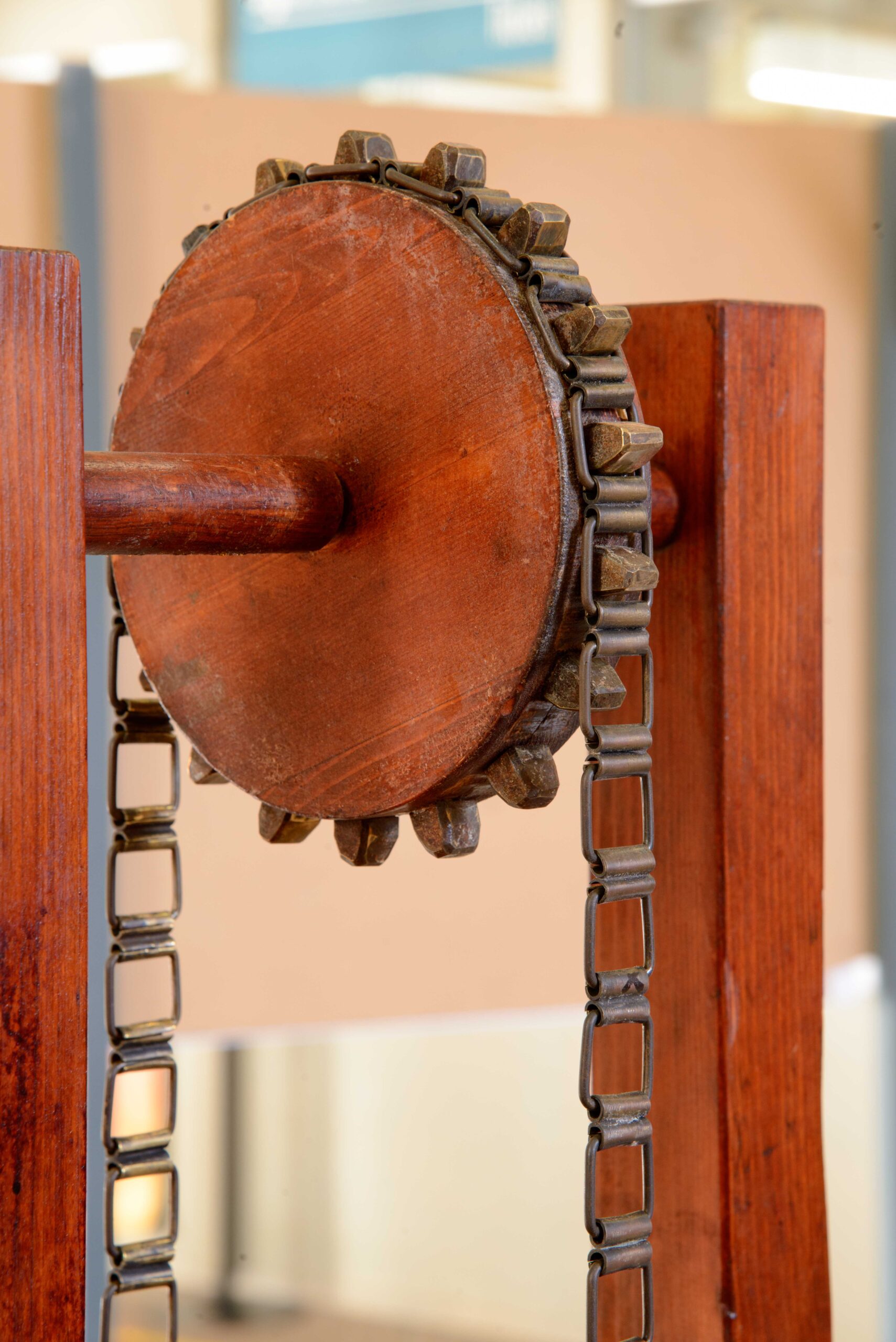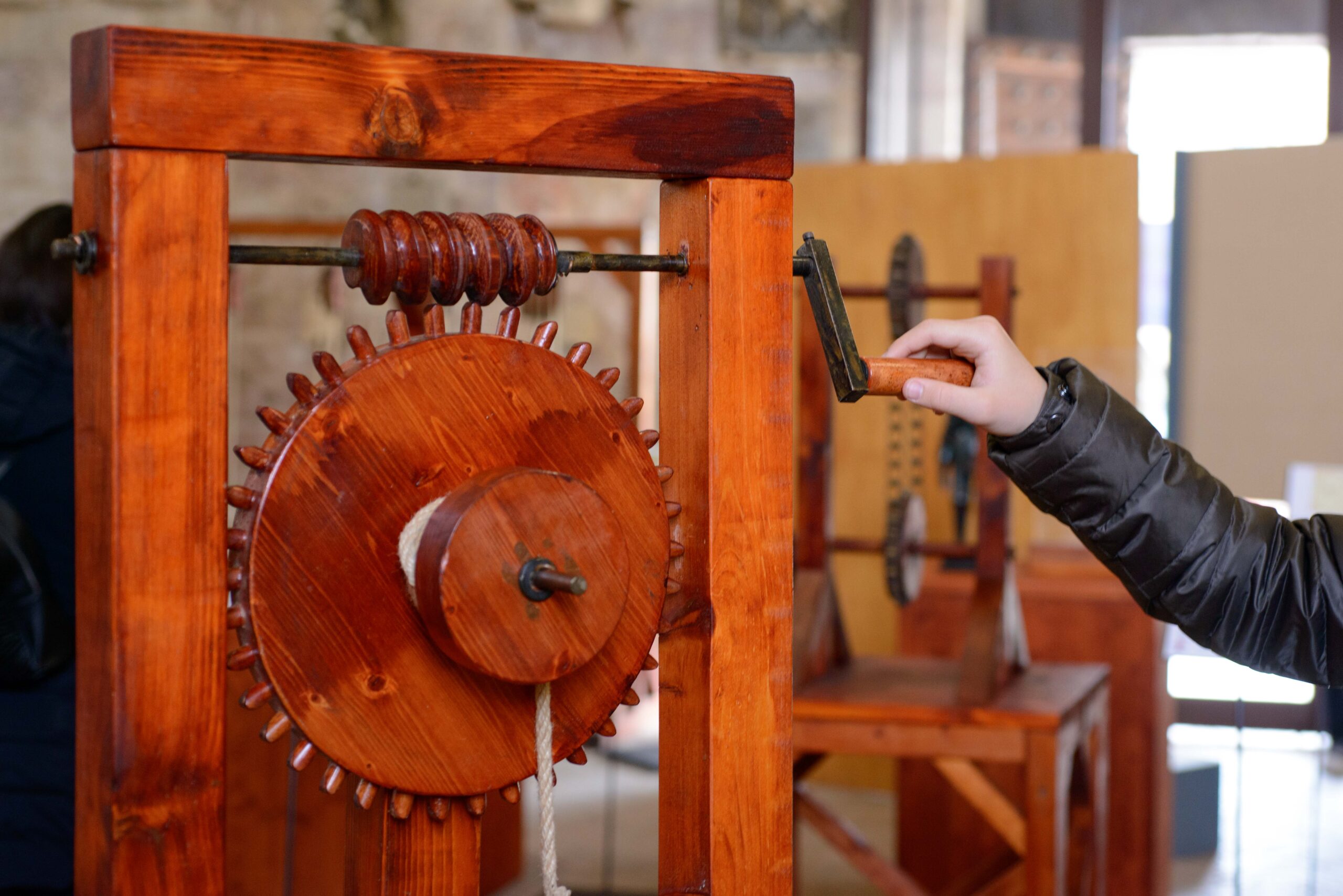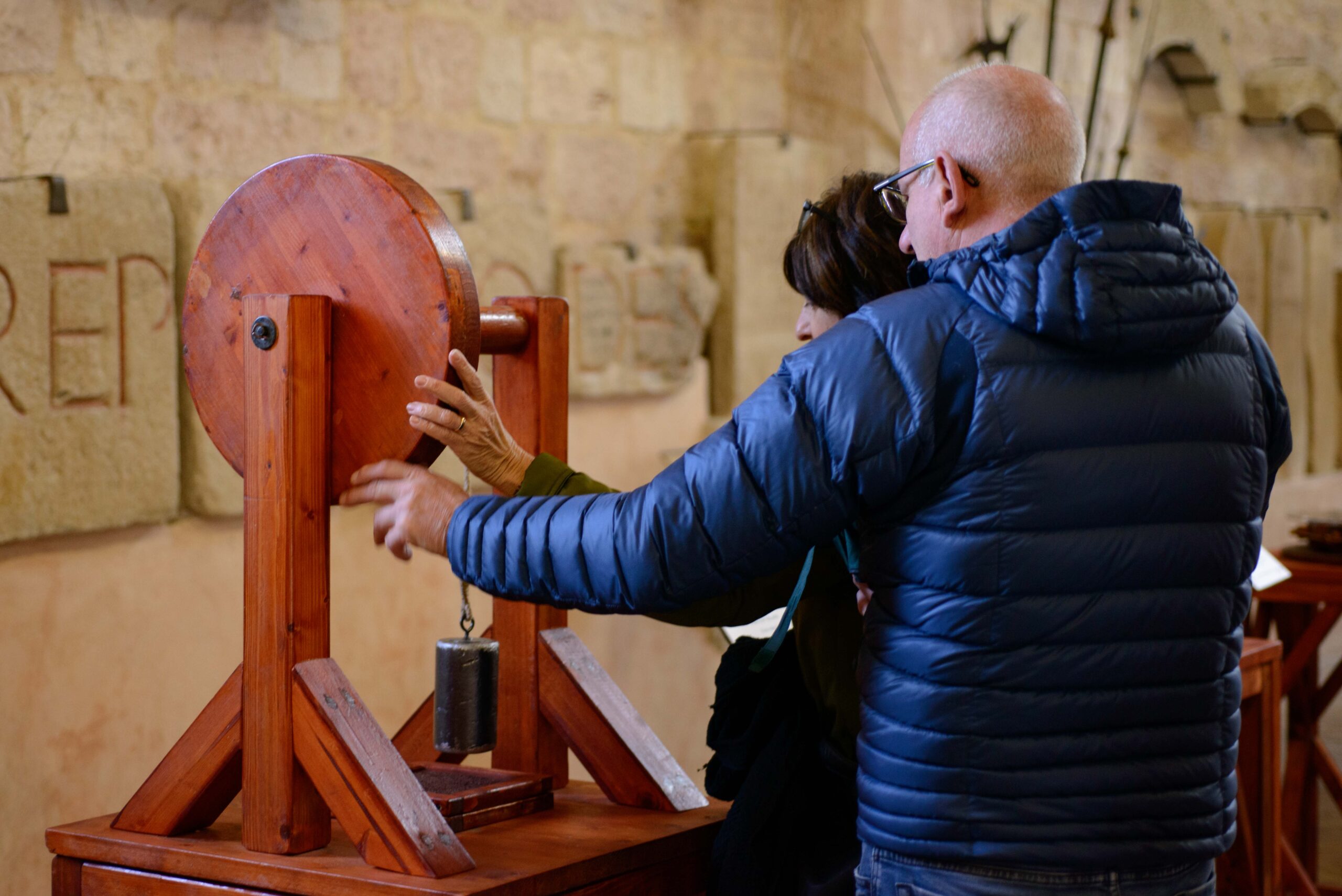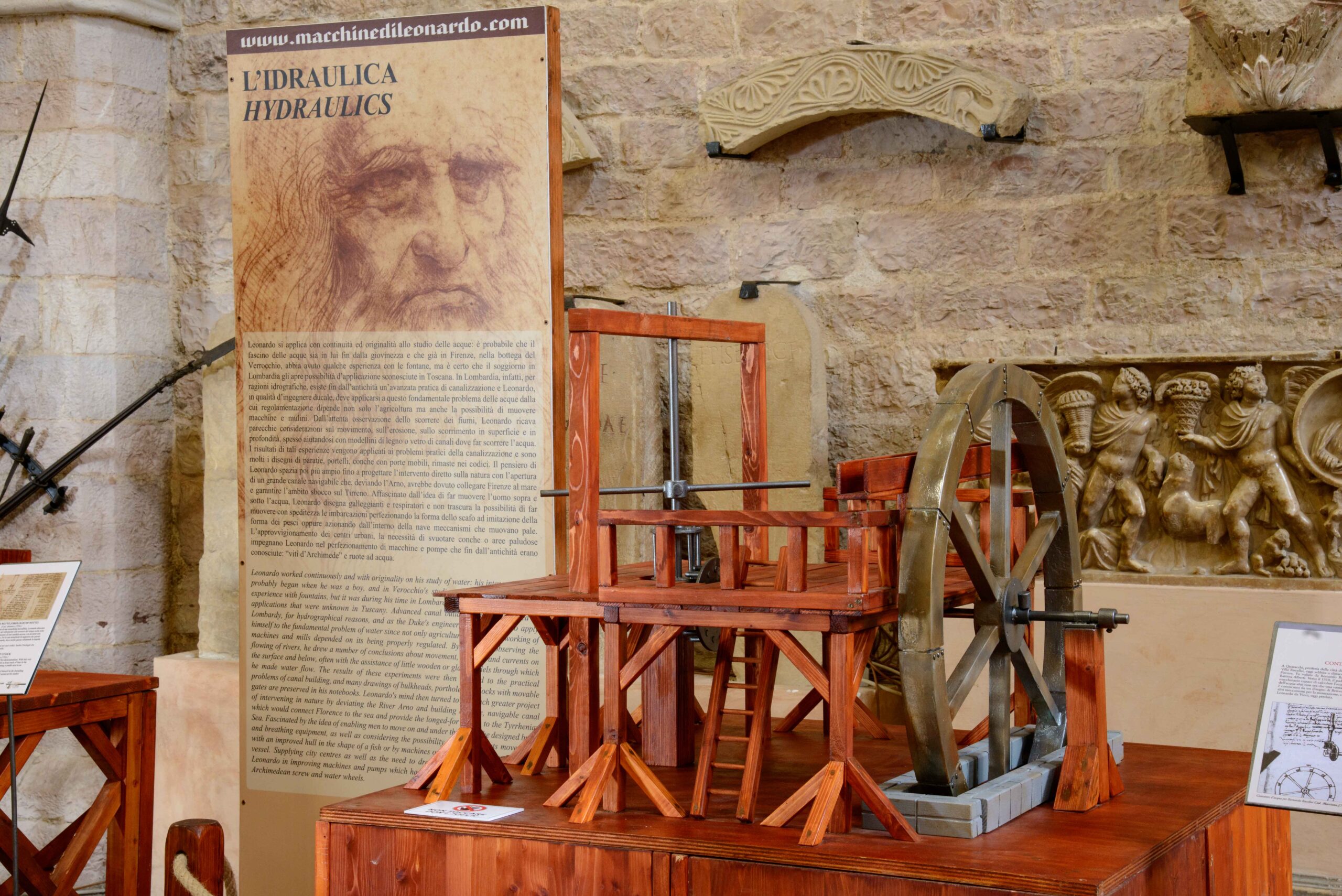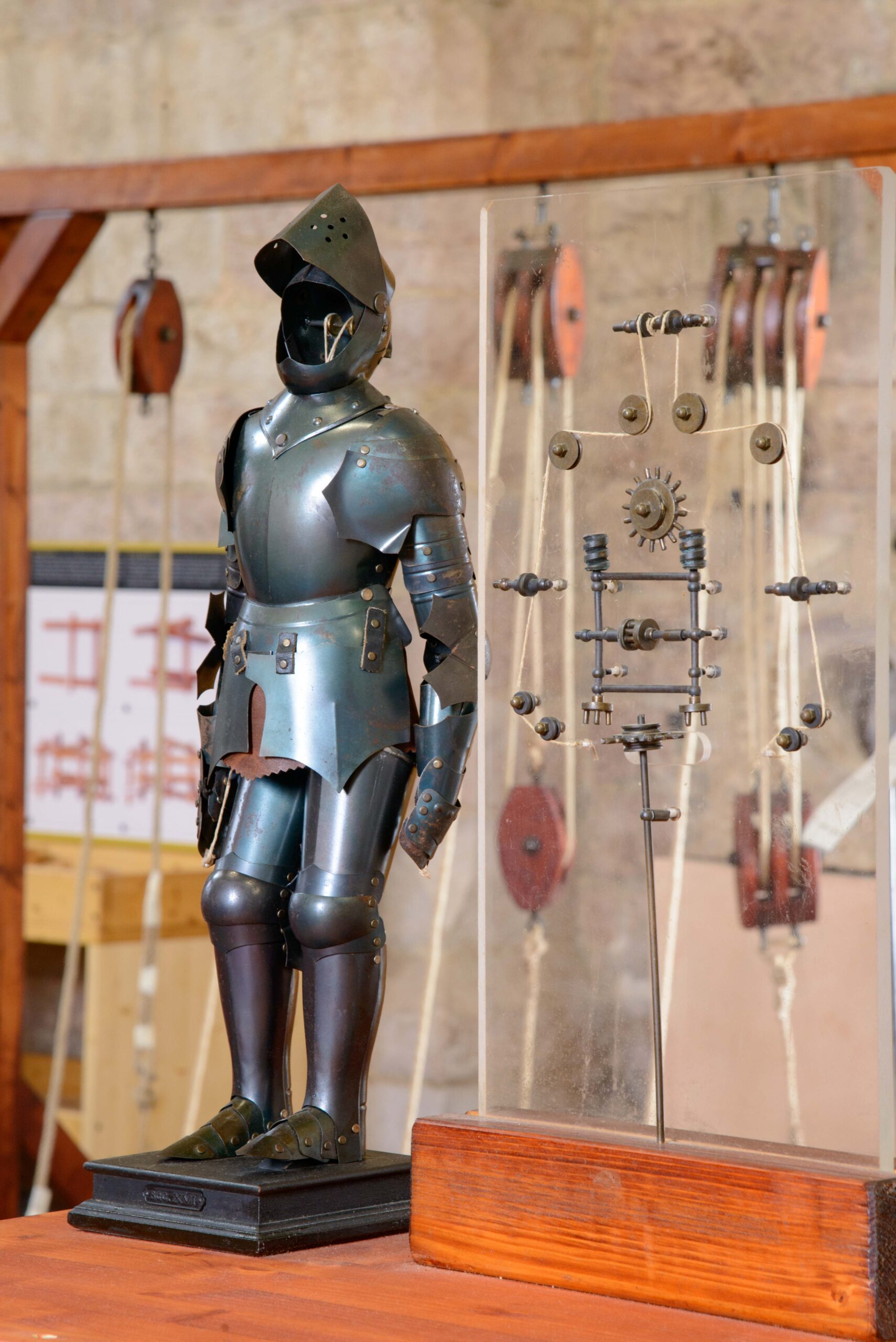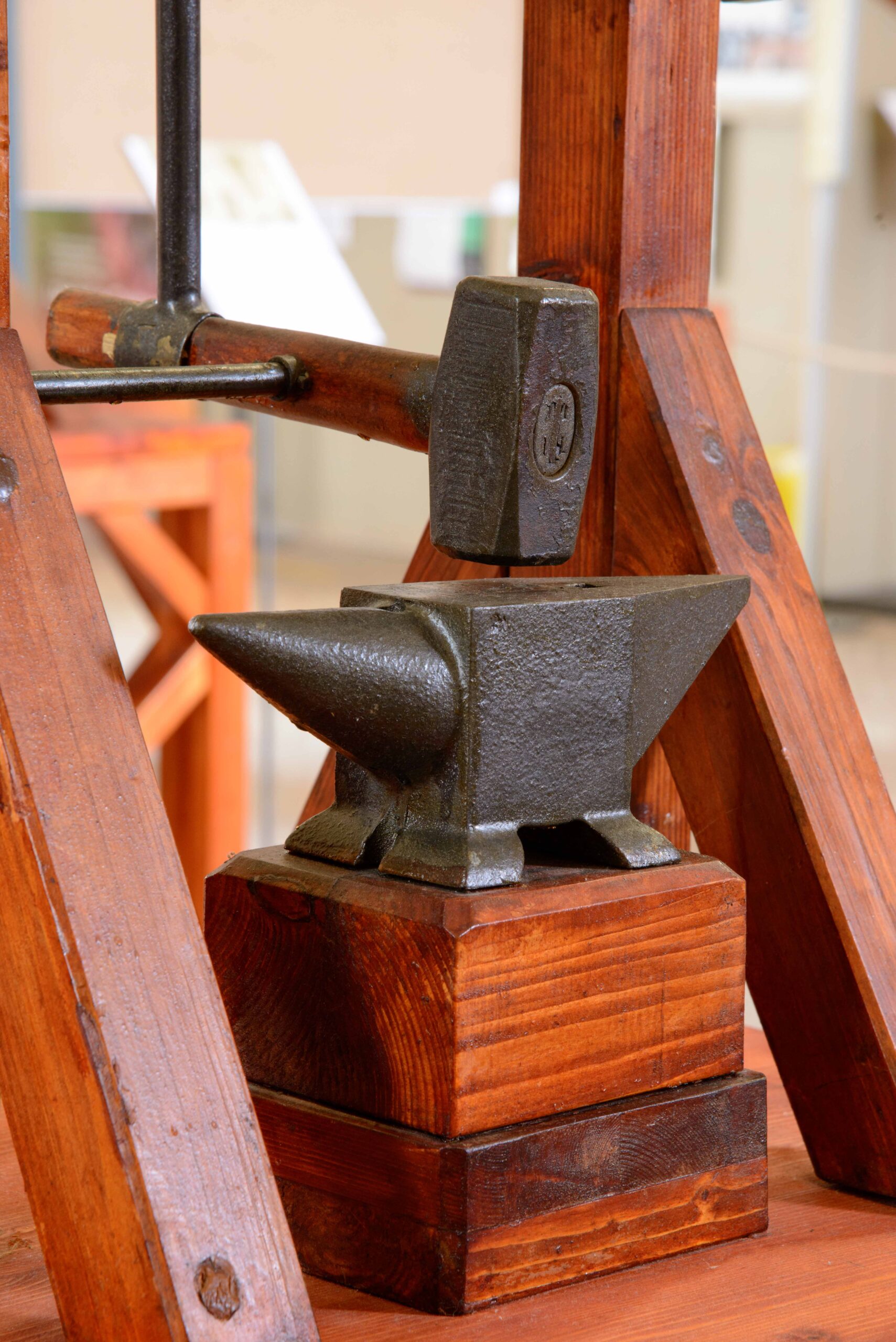The exhibition enhances the figure of Leonardo da Vinci who is recognised universal genius, supreme engineer and scientist of the Renaissance, in fact he was not only an artist, but his works as an inventor and scientist made him a true Renaissance man and more he served a role model because he applied the scientific method to every aspect of life.
As an inventor Leonardo developed a unique new attitude about machines. He reasoned that by understanding how each separate machine part worked, he could modify them and combine them in different ways to improve existing machines or create inventions no one had ever seen before.
Leonardo’s fascination with machines probably began during his boyhood. As an apprentice in the studio of the artist Verrocchio, Leonardo observed and used a variety of machines. By studying them he gained a practical knowledge about their design and structure. Moreover his talent as an illustrator allowed him to draw his mechanical ideas with great clarity, in fact many of his sketches can easily be used to create perfect working models.
The exhibition “L’ingegno di Leonardo: le macchine” shows accurate reconstruxtions of Leonardo’s machines. The interactive machines on display are working models which have been hand crafted from Leonardo’s original sketches and designs contained in the Codes. Over 50 models will help discover how Leonardo’s thought is s till current and how many machines that he designed have found development, implementation and concrete adoption in different sectors of human activities, from civil and hydraulic engineering to the field of defence, mechanical, aeronautical and naval components.
The educational workshop is part of the exhibition and it’s dedicated to understanding physics and mechanics in a funny way. The practical skills learned by children allows them to understand basic mechanisms, engineering and mechanics through easy examples.
Among the models you can find:
FLYING MACHINES
AIR SREW
It’s widely recognised as the helicopter ancestor. In order to create the machines, he takes as its starting point the configuration of naval sails while the rotation mechanism is a new invention.
VERTICAL ORNITHOPTER
It is another of Leonardo’s visionary flying machines. The pilot is situated at the centre of the wing mechanism and moving arms, legs and head he is able to make the ship lift and take vertical flight.
STUDY OF A UNITED WING
After closely studying the anatomy of birds, Leonardo decided to aaply the characteristics he identified in birds to his own flying machines. His wing was modelled on bat wings. Various studies in the Atlantic Codex argue that the united wing was also meant for the reproduction of the flight of angels and demons in theatre and religious spectacles.
PARACHUTE
Leonardo’s parachute was made of a pyramidal rigid structure, covered with starched linen and it accumulated air into its interior side.Air had to push it upwards in order to slow down its fall.
GLIDER
It represents very important technical and scientific progress in Leonardo’s studies on human flight. Leonardo understands the importance of aerodynamics, he observes bat wings and large birds’ wings. Thanks to pulleys and handles, the pilot is able to flap the external wings while he stays in a vertical position at the centre of the machine.
WAR MACHINES
MOWING WAGON
I testifies to Leonardo’s study of antiquity , in fact war chariots were widely used in Mesopotamiam civilizations, in ancient, Egypt and in ancient Greece an Roma. Leonardo started from the chariot structure and strengthens its efficacy by a lantern gear inside the central cage, linked to the chariot wheels. The faster the horse runs the faster the scythes turn and their effect is letal.
TANK
In 1485 Leonardo da Vinci brought to realization a covered, three metres high carriage. It was equipped with an internal turret to observe the battlefield. Cannons are disposed all around to emit fire in any direction. For motion it needs eight men to move the internal gears, in his previous project horses had to move the carriage , but during battles they could become frightened by the noise of cannons.
OGIVAL CANNON BALLS
He understood that air had an effect on the trajectory of cannon balls so he designed ogival projectiles which are incredibly modern in their use of aerodynamic shape and directional wings.
CANNON WITH LIFT ADJUSTMENT
His thoughts on maneuverability of war machines are in the Codex Atlanticus. In this case a cannon .
ARCHED BRIDGE
It’s a simple bridge with a simple assembly process made up of the interlocking of wooden logs.
SAFE WORK MACHINES
COLUMN LIFTER
It’s the result of the meeting between Leonardo and Francesco di Giorgio Martini. This machine facilitates the work on building sites and guarantees safety during lifting operations.
CAM HAMMER
In metal processing and forging the handle would have let the blacksmith move the hammer in complete safety, allowing him to step away from the fire and its sparks.
AND MORE…
POLYHEDRON
The result of an important friendship and collaboration between Leonardo and the mathematician Luca Pacioli during thei stay at Ludovico il Moro’s court.
ROASTIN JACK
It’s a clever kitchen machine. It exploits the energy produced by the heat of the fire in order to move a blade positioned in the upper part of the chimney that is linked to the spit by a chain system.
BALL BEARING
The frictional force is a resistant force that makes motion difficult and to solve the problem Leonardo uses the ball bearing very similar to the one in use today.
HELICAL GEAR
In order to optimize the motion transmission in a machine Leonardo projects a mechanism where an endless screw sets a cog-wheel motion. It is very close to a modern mechanics transmission systems.
